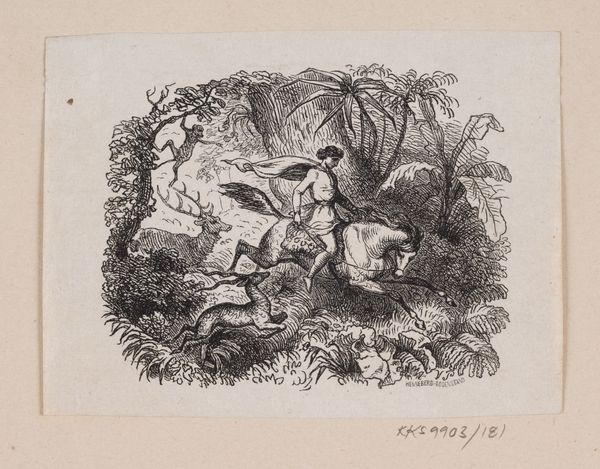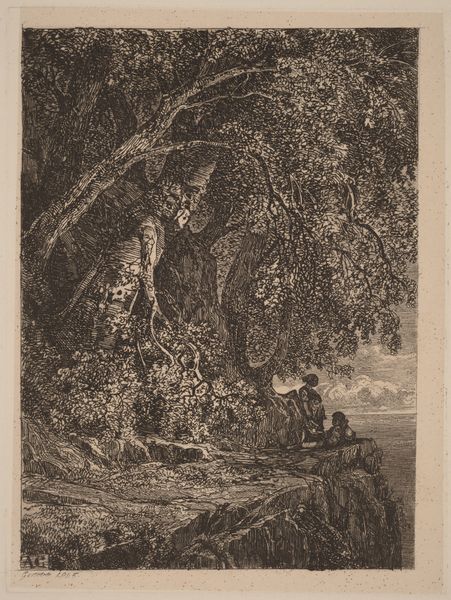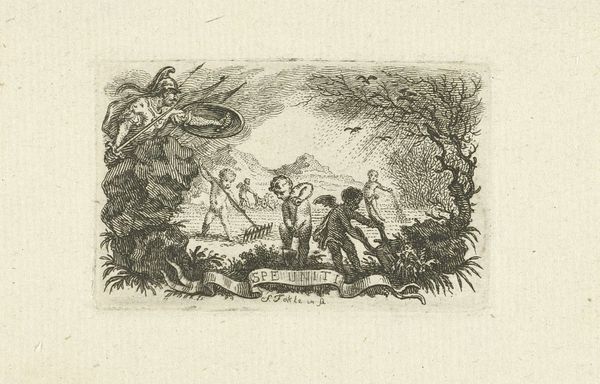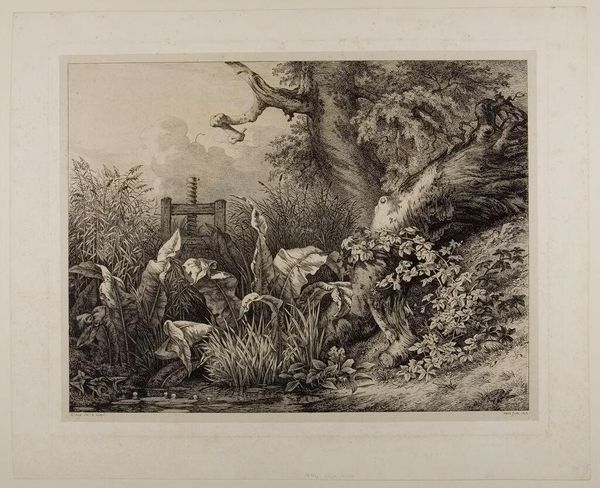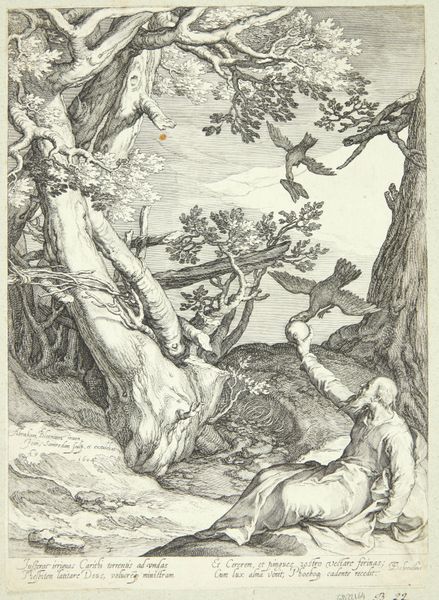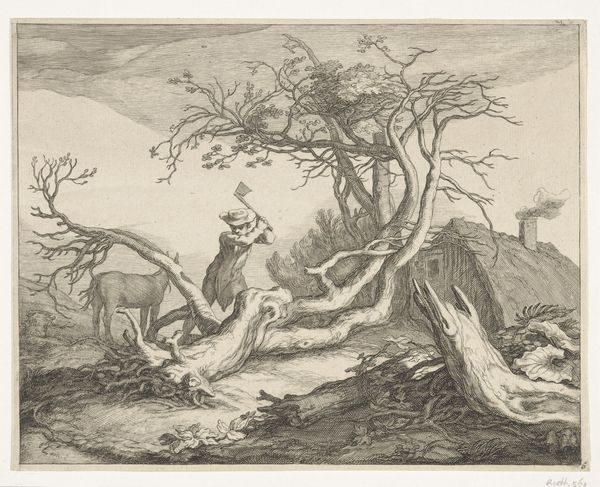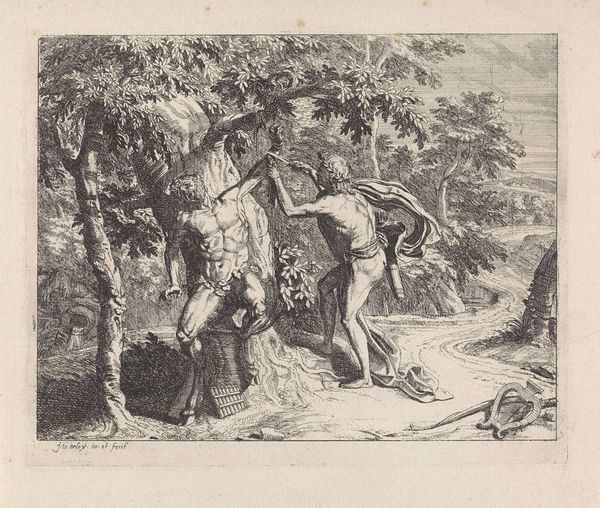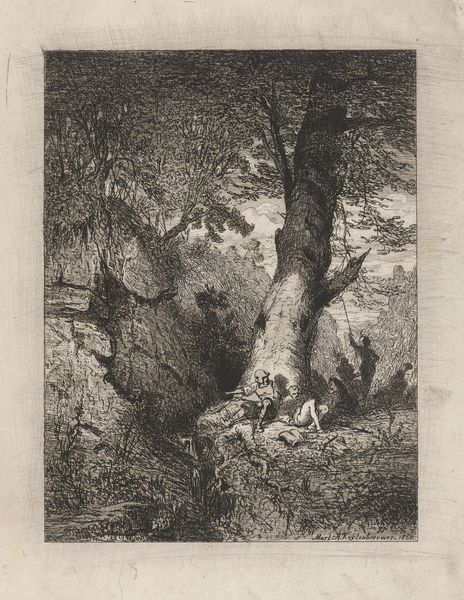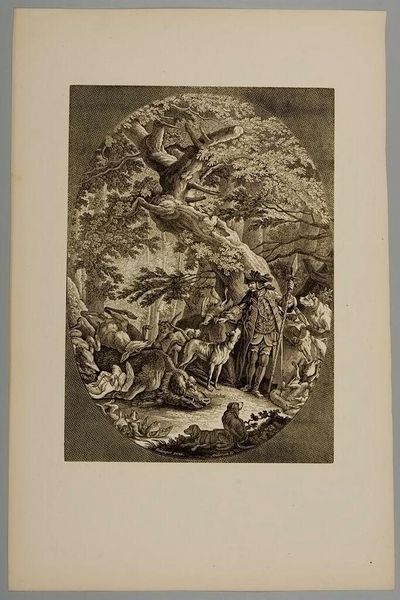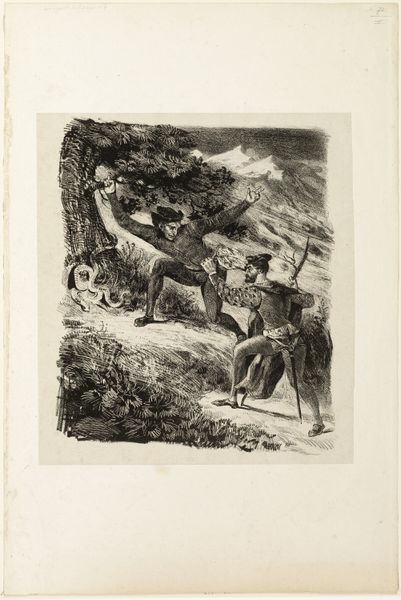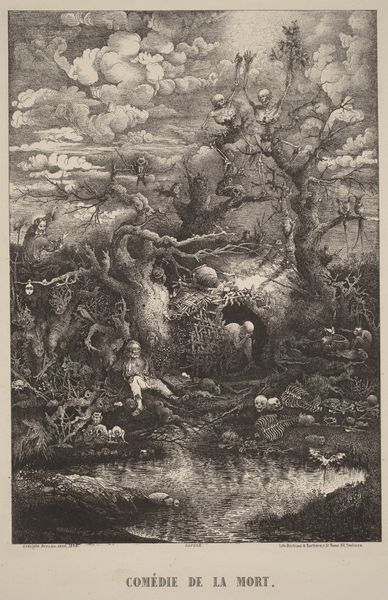
drawing, ink, pen
#
drawing
#
narrative-art
#
pen sketch
#
pencil sketch
#
landscape
#
figuration
#
ink
#
pen
Dimensions: height 127 mm, width 106 mm
Copyright: Rijks Museum: Open Domain
Editor: This drawing, "Mannen met houwelen in de rotsen aan het werk"—"Men with Picks Working in the Rocks"—presents us with a scene rendered in ink and pen by Isaac Weissenbruch, sometime between 1836 and 1912. I’m immediately struck by the narrative feel of it, like an illustration from a book. What do you see in this piece? Curator: Indeed. For me, this piece invites us to consider the portrayal of labor within 19th-century Dutch society, and how this intersects with emerging ideas of nationalism. The artist uses figuration set in a natural environment to evoke a spirit of work. Consider where this piece may have been exhibited: Did its patronage align with particular political viewpoints? Who was interested in purchasing artwork that portrays labour? Editor: So, the political context might actually be key here? It is, on the surface, a straightforward scene. Curator: Exactly. Art like this wasn't made in a vacuum. Public art serves different roles during specific periods. During Weissenbruch’s time, rapid industrialisation prompted the need for an imagery of social cohesion and perhaps some artistic or political tensions, depending on where it’s exhibited. Editor: That makes so much sense. I hadn’t considered the social implications of depicting manual labor like this. So the setting too might have some symbolism? Curator: Precisely! What strikes you about that landscape? Is it a generic or idyllic natural space, or does it suggest something specific about Dutch identity, land reclamation, or industriousness? These details matter! Editor: I was seeing it as just scenery, but I’m now curious about how 19th-century viewers would have read it, given all of those possible cultural references you mentioned. Thanks. Curator: Absolutely, art always prompts deeper historical and cultural questions.
Comments
No comments
Be the first to comment and join the conversation on the ultimate creative platform.
